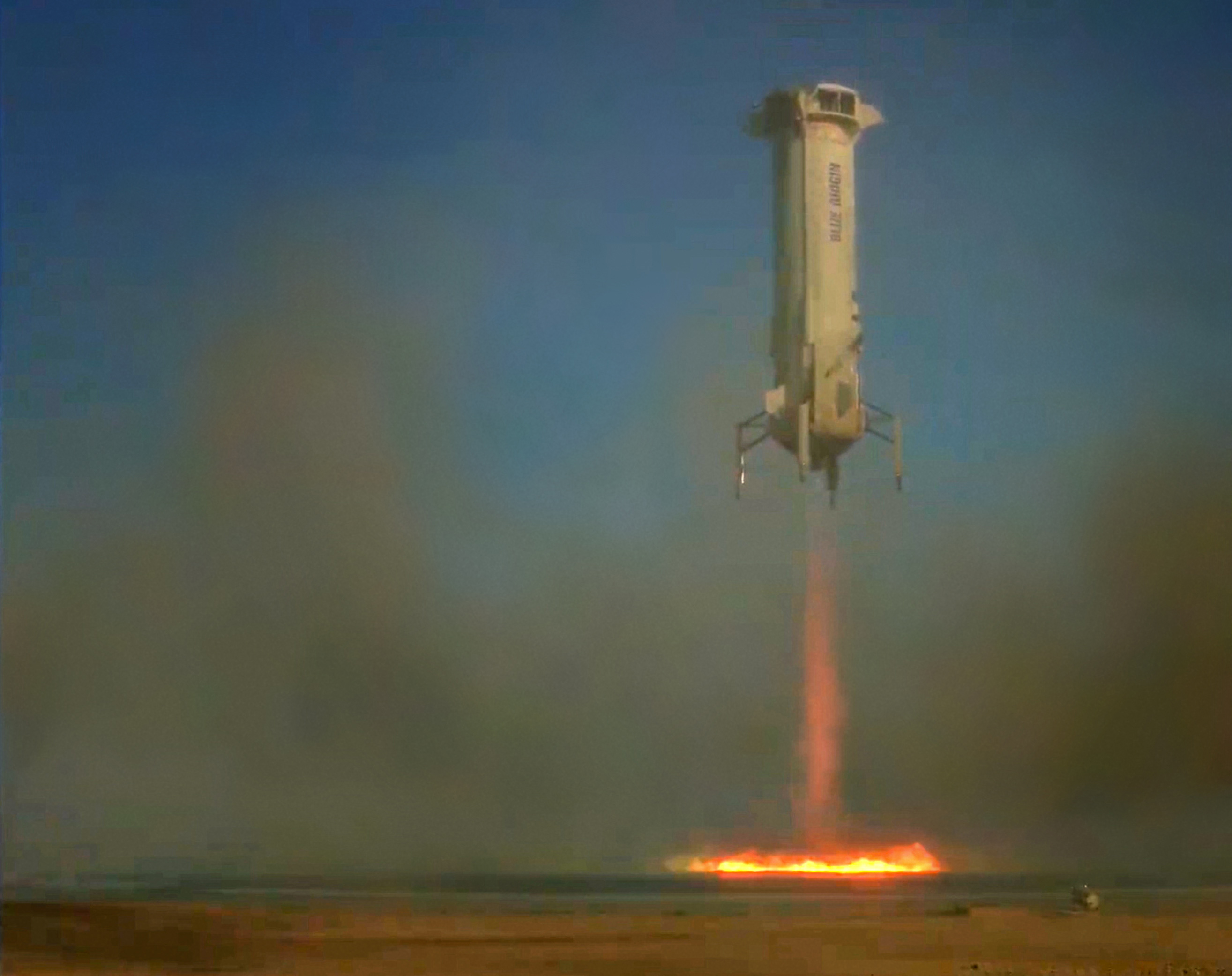News
Johns Hopkins APL Space Instruments Ride Aboard Blue Origin
Scientists and engineers from the Johns Hopkins Applied Physics Laboratory in Laurel, Maryland, are assessing the data from two experimental instruments flown into space aboard Blue Origin’s New Shepard rocket and crew capsule on Oct. 13.
The JHU APL Integrated Universal Suborbital Integration Platform (JANUS) and Integrated Remote Imaging System (IRIS), designed to make atmospheric measurements and to improve space environmental and situational awareness, were retrieved with 10 other payloads after a successful 10-minute flight that launched from Blue Origin’s western Texas test site.
It was the fifth New Shepard flight for JANUS, which contains sensors to observe and collect data on the naturally occurring electromagnetic fields both inside and outside the crew capsule as it flies into suborbital space, about 60 miles above Earth. With features such as power, data storage and ambient environment characterization, JANUS can be adapted for any type of mission — although the goal of this flight was to test an interface connecting JANUS’ advanced GPS receiver to New Shepard’s antenna, a first-time experiment that would enable the instrument to provide precise real-time payload position and velocity information along with atmospheric measurements.
“Each time we fly, we’re able to add more capacity and capability to the instrument,” said Todd Smith, the JANUS principal investigator at APL.
IRIS contains three visible-near-infrared cameras and an ultraviolet/visible spectrometer designed to characterize the atmosphere and to test the ability to detect and track space objects in real time, using the intelligent Space TArget Recognition and Tracking (iSTART) system. The experiments will help determine the suitability of commercial suborbital platforms for hosting payloads designed to track objects in space — particularly during daylight flights. IRIS was fastened inside the capsule during this flight, as a dry run for a later mission when the instrument will be mounted atop the propulsion module and outside the vehicle.
“The external mounting will be critical because it will remove light-filtering windows and reflections from the instrument’s view,” said Karl Hibbitts, IRIS principal investigator at APL. “This flight was a great test of the instrument’s operations and data-collection capabilities.”
“At APL, we like to leverage every opportunity to explore and experiment with sensors, processors and system architectures as precursors to the development of our spaceflight systems,” added APL’s Mike White, the iSTART program manager. “For example, on this mission, we were able to fly first-of-their-kind machine-learning and multi-intelligence fusion algorithms to detect, locate and track objects in space.”
Previously dependent on the space shuttle program, research in low Earth orbit has advanced significantly over the past decade because of the growth of the commercial spaceflight industry. The flights are also demonstrating their usefulness for space technology development; Tuesday’s flight, for example, included lunar landing technologies critical to NASA’s Artemis program to return humans to the Moon. JANUS and IRIS are funded through the Flight Opportunities program within NASA’s Space Technology Mission Directorate.
“Shared payloads and ride-along missions are excellent opportunities to test flight hardware and conduct real experiments in space,” said Steve Arnold, APL’s deputy mission area executive for Civil Space. “Because they can be done more frequently and inexpensively, these smaller missions provide valuable training experiences for the next generation of space scientists, engineers and program managers.”
The JANUS and IRIS teams will analyze data from this latest flight over the next several months.
